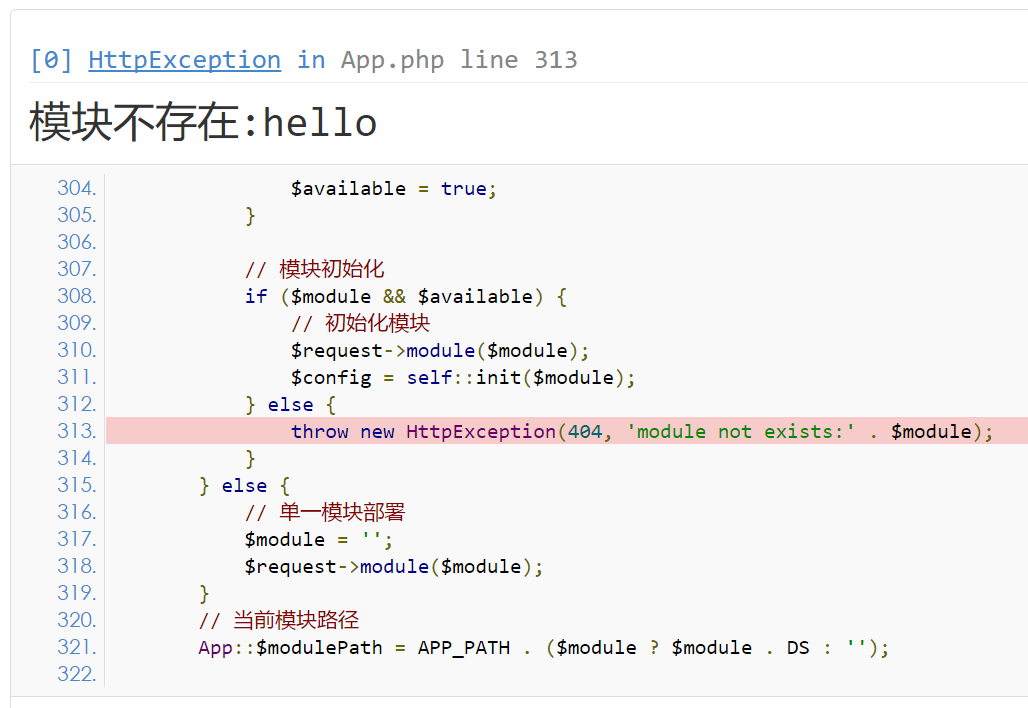异常处理-j9九游
和php默认的异常处理不同,thinkphp抛出的不是单纯的错误信息,而是一个人性化的错误页面。
默认异常处理
在调试模式下,系统默认展示的错误页面:

只有在调试模式下面才能显示具体的错误信息,如果在部署模式下面,你可能看到的是一个简单的提示文字,例如:

本着严谨的原则,5.0版本默认情况下会对任何错误(包括警告错误)抛出异常,如果不希望如此严谨的抛出异常,可以在应用公共函数文件中或者配置文件中使用
error_reporting方法设置错误报错级别(请注意,在入口文件中设置是无效的),例如:
// 异常错误报错级别,
error_reporting(e_error | e_parse );
异常处理接管
框架支持异常页面由开发者自定义类进行处理,需要配置参数exception_handle
// 异常处理handle类 留空使用 \think\exception\handle
'exception_handle' => '\\app\\common\\exception\\http',
自定义类需要继承handle并且实现render方法,可以参考如下代码:
namespace app\common\exception;
use exception;
use think\exception\handle;
use think\exception\httpexception;
class http extends handle
{
public function render(exception $e)
{
// 参数验证错误
if ($e instanceof validateexception) {
return json($e->geterror(), 422);
}
// 请求异常
if ($e instanceof httpexception && request()->isajax()) {
return response($e->getmessage(), $e->getstatuscode());
}
//todo::开发者对异常的操作
//可以在此交由系统处理
return parent::render($e);
}
}
需要注意的是,如果配置了'exception_handle',且没有再次调用系统
render的情况下,配置http_exception_template就不再生效,具体可以参考handle类内实现的功能。
v5.0.11版本开始,可以通过闭包定义的方式简化异常自定义处理,例如,上面的自定义异常类可以改为直接配置exception_handle参数:
'exception_handle' => function(exception $e){
// 参数验证错误
if ($e instanceof \think\exception\validateexception) {
return json($e->geterror(), 422);
}
// 请求异常
if ($e instanceof \think\exception\httpexception && request()->isajax()) {
return response($e->getmessage(), $e->getstatuscode());
}
}
部署模式异常
一旦关闭调试模式,发生错误后不会提示具体的错误信息,如果你仍然希望看到具体的错误信息,那么可以如下设置:
// 显示错误信息
'show_error_msg' => true,

异常捕获
可以使用php的异常捕获进行必要的处理,但需要注意一点,在异常捕获中不要使用think\controller类的error、success和redirect方法,因为上述三个方法会抛出httpresponseexception异常,从而影响正常的异常捕获,例如:
try{
db::name('user')->find();
$this->success('执行成功!');
}catch(\exception $e){
$this->error('执行错误');
}
应该改成
try{
db::name('user')->find();
}catch(\exception $e){
$this->error('执行错误');
}
$this->success('执行成功!');文档最后更新时间:2018-04-26 10:41:55
未解决你的问题?请到「问答社区」反馈你遇到的问题